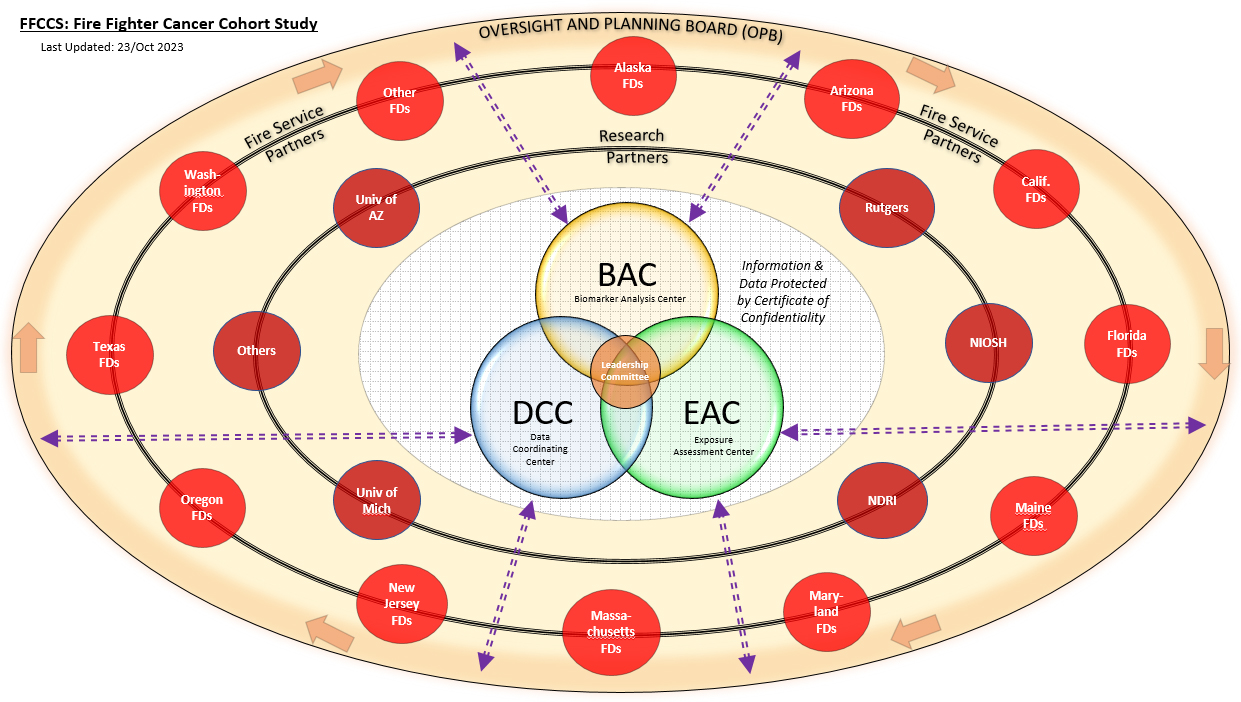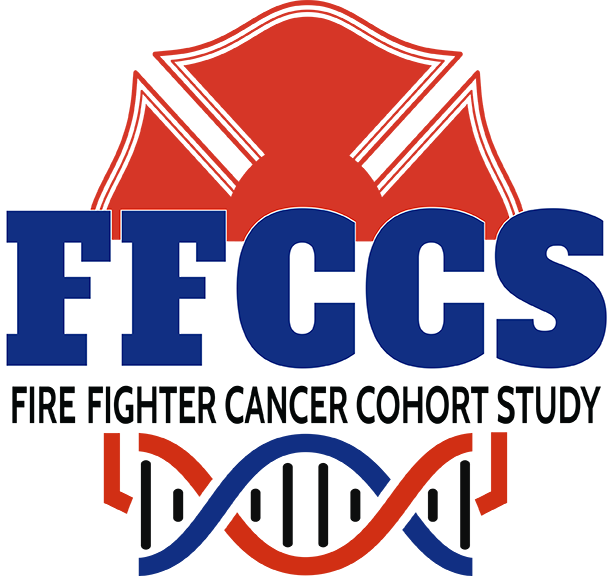
Background
• Cancer is a leading cause of fire service morbidity and mortality, and a recent National Institute for Occupational Safety and Health (NIOSH) study demonstrated an excess mortality rate for cancer in firefighters compared with the general population.
• Firefighters are exposed to multiple carcinogens in the workplace through skin contamination inhalation and ingestion
• Cancer has a long latency period and biomarkers are needed that can measure the effects, we currently do not understand which individual exposures are responsible for cancer in firefighters, the mechanisms by which these exposures cause cancer, or effective means of reducing exposures.
• Since cancer has a long latency period, biomarkers are also needed that can measure the effects of carcinogen exposure well before the development of cancer, when interventions to prevent disease could be effective.

Research Aims

1. Establish an oversight and planning board to provide study oversight, foster communication among fire organizations and help develop a long-term funding plan.
2. Create and test a cohort study data coordinating center and harmonized survey data protocols.
3. Develop and evaluate an exposure tracking system paired with quantitative exposure data to construct a firefighter carcinogen exposure matrix.
4. Create a biomarker analysis center and evaluate the association between cumulative firefighter exposures and epigenetic effects.
Importance
As contrasted with retrospective studies, this proposed prospective study will permit investigators to longitudinally collect information on exposures and other risk factors, while also collecting repeat measures on subclinical effects (e.g. epigenetic endpoints) that may be precursors to cancer. This prospective study design provides a means for investigators to assess the effect of current firefighting practices and exposures on epigenetic endpoints in the short-term and onset of disease in the long term. Chemicals to be evaluated include known human carcinogens such as benzene, formaldehyde, some polycyclic aromatic hydrocarbons (PFAS) and diesel engine exhaust, as well as halogenated compounds (chlorinated and brominated flame retardants, perfluorocarbons, etc.) which may also have carcinogenic effects.

Figure. Organization of firefighters' cohort study
Evaluation of biomarkers of effect can provide information on epigenetic changes associated with cancer pathways and increased cancer risk. Understanding the unique exposures associated with cancer in firefighters, as well as the toxicological mechanisms involved, is essential for guiding interventions to prevent cancer outcomes.

